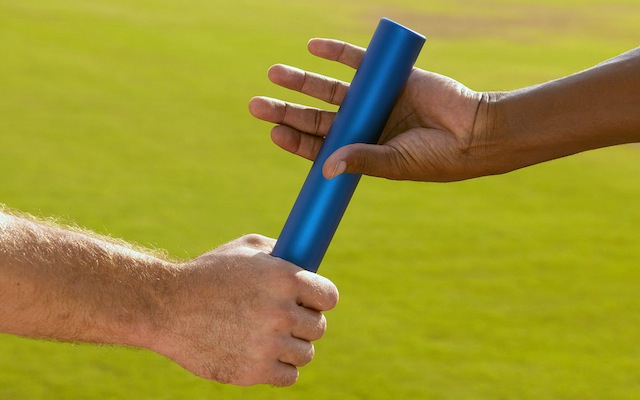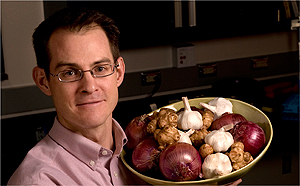SOFT BOILED EGGS FOR BREAKFAST . . . or for LUNCH . . . or a SNACK
Boiledd eggs are the best if you have a friend who raises chickens, and now and then, you get to admire the blue chicken eggs, the speckled eggs some small brown eggs and some that are white. It’s so pleasant, someday I might raise some chickens.
But boiling even store bought eggs is still a lot of fun and one of the best ways to cook eggs so that the healthy fat in the egg yolk does NOT get overheated. A registered dietician might arm-wrestle with me on this, but I don’t think it’s as good to cook eggs until they’re solid all the way through and an olive-green line surrounds the yolk. That’s actually a sign that the egg yolk has gotten so hot that it’s slightly oxidized—in other words, gotten coated with egg-rust. Have you heard of oxidized cholesterol? Most medical doctors agree that it’s more hazardous in your bloodstream than cholesterol that hasn’t oxidized. So why set yourself up by cooking eggs so much that when you eat them, they’re already oxidized? I’d rather eat my eggs the European way, which means letting the insides be slightly gooey. And hey, if Europeans don’t careen away from their breakfast tables, clutching their stomachs and crying out that they’ve contracted salmonella . . . then it’s probably not as common as many of us think. (And indeed, statistically, maybe one US egg in 20,000 has salmonella. And, unless you have a weakened immune system, even if you do happen to eat the “salmonella egg” there’s a good chance that you’ll never know).
As for how long to cook a hard-boiled egg: experiment. A chef once told me that you could tell how long a hardboiled egg has cooked by looking for the tiny bubbles. “When it’s getting done,” he said, “fewer of those tiny bubbles escape from the eggs.” He pointed to an egg where only a few tiny bubbles were still escaping from the shell. “That one’s just now getting hardboiled,” he said, and took it out of the pot.
It made me think of hard-boiled people. Like hard-boiled eggs, they don’t have many bubbles left.
So tiny emanations of effervescent air are one way to tell if an egg is done, but you have to be sharp about the bubbles. Another way that works for me is to put on a small pot of cold water, light the stove and put the eggs in while the water’s still chilly. Then I run up and take a shower, and make it a little quicker, so I’m all clean and dried off in roughly ten minutes. It helps me be efficient about taking the shower, and also it’s about right for cooking my eggs. I cook two at once. I take the first one out and then do another European thing.
Instead of tapping it and tapping the egg, then peeling off all the crumbs of the shell, I take a sharp knife and simply whack off the top. The Europeans do all this more delicately. But at least my way does work. If that first egg’s a little less cooked that I prefer, then I still eat it; but I let the second egg stay in the hot water just a little longer, so it’s a bit more done. If the first egg’s already pretty cooked, I whip out the second one as fast as possible. If the first egg’s TOO cooked, well they’re just eggs. Sometimes I’ll eat it anyway. And sometimes, I start over.
As for how to eat the egg, I’m definitely more European on that. I use a small enough spoon to get in and scoop everything out. It’s very elegant, really. For greater elegance, someday I might buy an eggcup.
RECIPE FOR BOILED EGGS
2 eggs
Small pan of cold water
Some people add a little vinegar, which evidently makes the eggs a little easier to crack.
1. Cover the eggs with cold water then turn on the stove
2. Let the eggs come to a boil and boil for roughly 3 minutes, as desired
3. Rinse under cold water, then using a sharp knife whack off a little lid
4. Eat with a small and elegant spoon
FOR LUNCH OR A SNACK, wrap two boiled but un-cracked eggs in a large napkin and take them with you. The un-cracked shells will help the eggs stay fresh and tidy, and they’ll actually cook a bit longer when they’re un-cracked, so that they’ll be a firmer food for snacking. Note that this even works as a good snack on a plane. Twice now, I’ve gotten four boiled eggs through security without any trouble. I guess that cooked eggs don’t count as a liquid. Though if anyone ever questions me, I’ll put them in the plastic bag with my lipstick and toothpaste and see what happens. However I get them through the line, I think they’re worth it. Those boiled eggs give me a healthier and tastier meal than I’d normally get on an airplane!






2 comments for “Eggs – Soft Boiled”